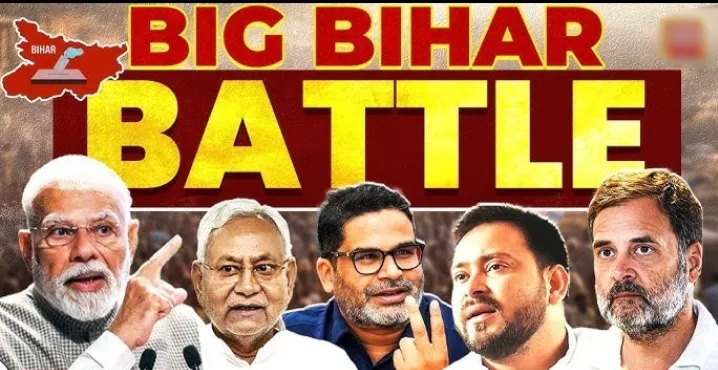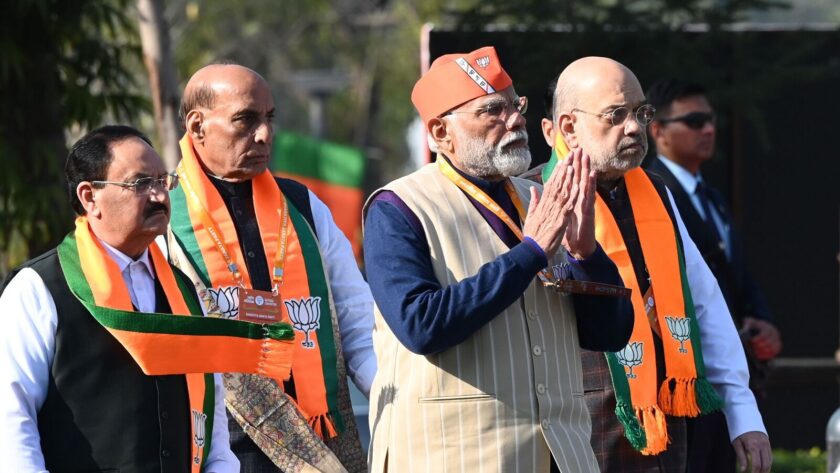Two-phase polling to decide Nitish Kumar’s political future; 7.43 crore voters to shape Bihar’s next decade
Patna: As the Election Commission announced polling dates for the Bihar Assembly elections, the state’s politics has entered a phase of intense activity and uncertainty. Voting will be held in two phases, and results will be declared on November 14, marking a decisive moment in Bihar’s political history.
This time, the contest goes beyond Nitish vs Tejashwi or NDA vs INDIA bloc. It has evolved into a triangular clash — experience vs aspiration, good governance vs change, and trust vs disillusionment. After two decades in power, Chief Minister Nitish Kumar faces the toughest test of his political career as voters prepare to pass judgment on his model of governance.
Over 7.43 crore voters, including 3.50 crore women and 3.92 crore men, are eligible to vote, with 14 lakh first-time voters expected to play a pivotal role. This young generation, more concerned with employment, education, migration, and corruption than caste loyalties, could alter the course of the election.
Anti-incumbency and fatigue challenge Nitish’s stronghold
Since 2005, Nitish Kumar has been the enduring face of Bihar’s politics — credited with transforming the state from ‘jungle raj’ to ‘sushasan’. But two decades later, the same leader now faces what the opposition calls “Nitish fatigue syndrome.” The RJD-Congress-Left alliance, led by Tejashwi Yadav, is campaigning aggressively on the promise of change, while the NDA — comprising JD(U), BJP, LJP (Ram Vilas), and HAM — is banking on its traditional equations.
However, internal friction within the NDA has surfaced. Strains between the BJP and JD(U) over seat sharing and Nitish’s advancing age and health have become talking points. The BJP has made Prime Minister Narendra Modi the face of its campaign, hoping his popularity will offset local discontent.
Law and order, corruption take center stage
Rising crime, unemployment, and collapsing health and education infrastructure have weakened the NDA’s narrative of “good governance.” The recent murder in Mokama, where strongman Dularchand Yadav, a supporter of the Jan Suraaj Party, was shot dead, has raised serious questions over law and order. The opposition has branded it as the “collapse of Sushasan”, accusing the government of letting Bihar slip back into the shadows of “Jungle Raj.”
Prashant Kishor’s Jan Suraaj Party adds a third dimension
Former strategist Prashant Kishor and his Jan Suraaj Party have complicated the contest by emerging as a third force, particularly among youth and educated voters disillusioned with caste politics. Kishor’s sharp allegations of corruption and nepotism within the NDA have made the ruling alliance defensive. While Jan Suraaj’s vote share may be limited, its presence could lead to triangular contests in several constituencies.

Welfare politics and the women’s vote
The NDA is relying on welfare schemes to retain its base — offering ₹10,000 assistance to women, higher pensions, unemployment allowance, farm insurance, and free electricity. Women, who have voted in higher numbers than men since 2020, remain the decisive bloc. Analysts say the female vote could determine whether Bihar opts for stability or change.
Meanwhile, the opposition is focusing on employment, education, and migration, with Tejashwi Yadav’s rallies alongside Rahul Gandhi drawing significant crowds. But translating enthusiasm into votes remains a challenge. Allegations of irregularities in the voter rolls could also become a flashpoint in urban constituencies.
Caste arithmetic vs development narrative
Bihar’s caste landscape has evolved post the 2022 caste survey, which revealed Extremely Backward Classes (EBCs) form the largest group at 36%, followed by OBCs (27%), SCs (19.6%), and Muslims (17%). The NDA is striving to retain its grip over these sections, while the INDIA bloc banks on the Yadav-Muslim base and aims to expand its outreach to Dalits and EBCs.
Rural Bihar remains an NDA stronghold, while opposition support is strengthening in urban areas. The “Modi factor” and central welfare schemes continue to benefit the NDA, but Nitish’s fading charisma could offset those gains.
A test of political transformation
For the opposition, unity is both a strength and a challenge. Tejashwi’s appeal remains region-specific, and Congress’s influence has waned. If the alliance maintains cohesion and sustains its campaign on unemployment and corruption, the battle could be neck-and-neck. Otherwise, the NDA might weather anti-incumbency under the shield of stability and governance.
Ultimately, Bihar 2025 is not just an election for power — it’s a referendum on political culture. Between Nitish’s legacy of order, Tejashwi’s promise of change, and Kishor’s new politics, the people of Bihar will decide whether they prefer continuity or transformation. When results are announced on November 14, the verdict will not just choose a Chief Minister — it will define whether Bihar’s democracy is still rooted in old loyalties or ready to embrace a new political future.






